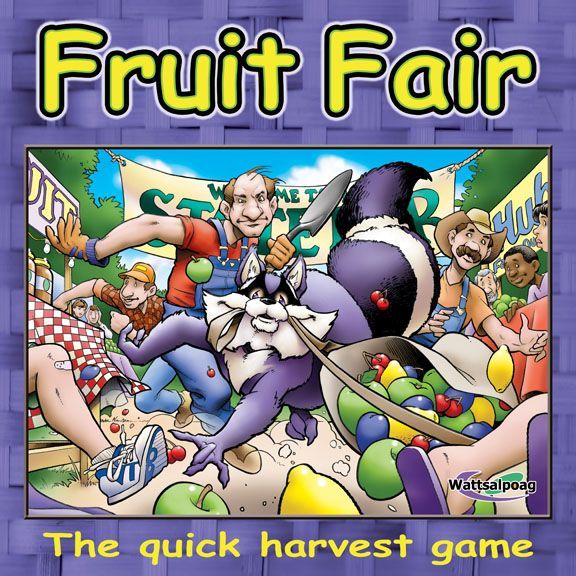Fruit Fair (2008) Board Game
Fruit Fair is a board game released in 2008, designed by Quinton Hoover and Mike Raabe. The game is set in a farming theme, where players compete to collect different types of fruits in order to earn points.
Game Components of Fruit Fair
How To Setup Fruit Fair
Gameplay Mechanics and Game Objective
In Fruit Fair, players take turns selecting actions to collect different fruits from the market. Players can also place workers to gain bonus points or block other players from collecting specific fruits. The objective of the game is to collect the most valuable fruits and earn the highest number of points by the end of the game.
Player Experience
#
Pros:
#
Cons:
Personal Thoughts on Fruit Fair
Fruit Fair is a solid farming-themed board game with interesting gameplay mechanics. The set collection and worker placement elements provide a good amount of strategy for players to engage with. However, the lack of player interaction and potential repetitiveness may turn off some players.
In terms of build quality, the components of Fruit Fair are well-made and durable. The game is suitable for players aged 10 and above, making it a family-friendly option. Pricing and availability for both new and used copies may vary, so it’s worth checking multiple sources before making a purchase.
For fans of farming games and strategic set collection, Fruit Fair is definitely worth your time. However, if you prefer games with more player interaction or a different theme, you may want to skip this one. Some alternatives to consider are Agricola or Catan, which offer similar mechanics in different settings. Ultimately, Fruit Fair is a game that caters to a specific audience and may not appeal to everyone.
Game Components of Fruit Fair
How To Setup Fruit Fair
To set up the game, players secretly assign their pickers and planters to different orchards. Each player has a set of tokens and cards that need to be distributed according to the game’s rules. The orchard cards are laid out, and each player prepares their action cards. The setup is relatively straightforward, ensuring that all players have their resources and are ready to begin the game.
Gameplay Mechanics and Game Objective
Player Experience
Fruit Fair offers a engaging and strategic experience where players must balance their short-term and long-term goals. The game requires careful planning and tactical execution, as the actions of other players can significantly impact your own strategy. The secret assignment of pickers and planters adds a layer of unpredictability, keeping players on their toes.
Pros
Cons
Personal Thoughts on Fruit Fair
Fruit Fair is an excellent choice for those who enjoy light to medium-weight strategy games with a socialinteractive element. It’s perfect for family gatherings or casual game nights with friends, as it combines simple rules with deep strategic play. However, it may not be the best fit for those seeking a purely cooperative or highly complex game.
We are supported by our audience. When you purchase through links on our site, we may earn an affiliate commission, at no extra cost for you. Learn more.

